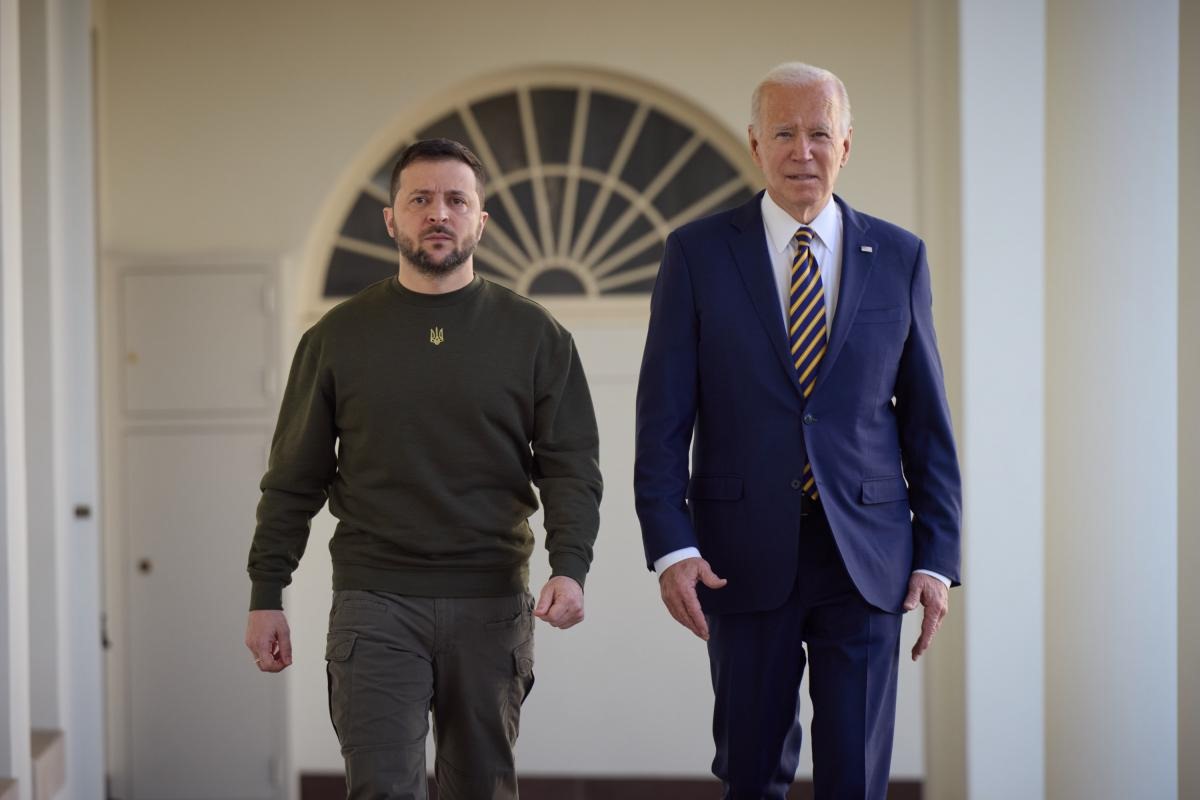Zelenskyy Presents Ukraine's "Victory Plan" to Biden: What Might and Should Be in It?

Mykola Bielieskov, Senior Analyst at CBA Initiatives Center, meditades about the document that he ambitiously described as a "Victory Plan".
On August 27, 2024, President of Ukraine Volodymyr Zelenskyy announced that during his visit to the United States in September 2024, he would present a document that he ambitiously described as a «Victory Plan». The plan will be presented to the current US President Joseph Biden as well as presidential candidates from two parties - Kamala Harris and Donald Trump. Later during the interview with American journalist Fareed Zakaria the President of Ukraine clarified that the victory plan would include the following points: security, Ukraine's geopolitical position, solutions for the economic support, strong and affordable military support. But the plan as a whole still remains a mystery. However, this does not prevent us from trying to understand what details the document can and should contain in order to meet its ambitious title “Victory Plan”.
The key task of the strategy in the warfare
Victory Plan should be a document of strategic level. And the key task of any strategy during the war is to find the balance between political objectives, available resources in general and military potential in particular. And the ability to use the respective resources on the battlefield. If all those factors are in balance, the chances for success are significant. And vice versa.
Let us start with the political component. There are no disagreement between Ukraine and the United States on the primary political tasks as of now. It is about strategic defense that facilitates maximum preservation of Ukraine's sovereign territories and ensures that the rate of Russian losses in weapons and manpower is greater than the rate of its recovery. However, prior to this Ukraine and the US articulated differently how they envision Ukraine’s ultimate victory.
The official position of Ukraine is not only the preservation of sovereignty but also the full restoration of its territorial integrity. Meanwhile, representatives of the Biden administration have avoided wording about Ukraine's victory through the restoration of territorial integrity for almost 31 months since the start of the full-scale invasion, limiting themselves to thesis statements about guaranteeing Ukraine's sovereignty and security, democratic governance, and economic and social development in the future. Yes, the United States vaguely attaches the same importance to the territorial integrity as the Ukrainian side does. However, the US side does not directly articulate it.
The United States implies that the mere preservation and functioning of Ukraine as a self-sufficient independent state (albeit not necessarily within the borders of early 2022 or 2014) is enough. This should be a key antithesis to Russia's declared plans to destroy Ukraine. As a result, the United States and Ukraine had fundamental differences in their vision of the ultimate political goals of the war, up until this moment. How the future Ukraine’s victory plan approaches this issue will be very difficult and crucial at the same time. After all, the resource support for a plan of the relevant political scale is entrusted to our partners. Differences in the vision of the ultimate political goals mean differences in the attraction of the necessary resources.
The next issue is resource provision in general. Since February 2022, Ukraine's position has been based on the idea that the countries of Europe and North America will conduct military-industrial mobilization on a par with the global confrontations of the twentieth century. In fact, it should be about the countries of the Ramstein format turning their latent economic and technological advantages into Ukraine’s all-out advantage on the battlefield.
However, our partners constantly hint to us that Ukraine's strategy should be based on the assumption that the resources of the West that Ukraine is counting on, are limited. In other words, we are not talking about nominally unlimited resources based on the ideas of the 20th century conflicts. As a result, there are fundamental differences in this regard, which should be taken into account in the victory plan.
Finally, the military component of an optimal strategy must take into account the ongoing revolution of warfare, which is fully destroying the perception of optimal tactics and operational art based on the canons of WWII through the further cheapening and proliferation of reconnaissance and destruction means, and the automatisation of decision-making processes. This has resulted in an increasingly non-contact/remote nature of warfare.
Conducting a classical offensive operation is a challenge in the conditions that both Russian and Ukrainian actions in 2022-24 have shown. However, even stabilizing the front line and ensuring a favorable balance of attrition require not only rapid technological adaptations and their scaling, but also improving the situation with manning, training, and employment of the Defense Forces of Ukraine.
This component is more of an interest to a narrow circle of military experts. However, it is also inextricably linked to other two components, simultaneously influencing them and being influenced by them.
Stopping the negative dynamics at the frontline and sending the right signal to the Russian Federation
Ukraine’s victory plan is being announced at a time when the key current challenge to our strategy is obvious. Today, it is critical to stop the negative strategic dynamics that are gaining momentum. We are talking about Russia's local military successes in eastern Ukraine, which our adversary is using to undermine morale within Ukraine and among our partners. And thus creating the basis for new advances. The current dynamics are dangerous not only because of the loss of the territories, but also because Russia is strengthening its negotiating position on another key issue. Namely, Ukraine's sovereign military capabilities in the future and the level of cooperation with partners on this issue.
Our challenge remains the same in the longer term. Our partners must demonstrate a level of cooperation and support for Ukraine in the future that will convince Russia of the futility of violating possible agreements and ensure their sustainability. This requires integrating our country into the network of formal and informal security cooperation with the countries of the Ramstein format. That is, filling the bilateral security agreements with the maximum substance with adequate resource support. The task remains a challenge, given the volatility of modern democracies in the process of fundamental political, social and economic changes. However, the document that Volodymyr Zelenskyy is about to present in the United States will be evaluated specifically on its ability to respond to the current and long-term challenges.
The material is based on the Forbes column.
Поділитись

